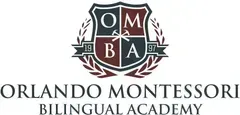The Montessori Curriculum
Maria Montessori found that next to learning from their own experience, the child learns best from other children. Therefore she created a mixed age group where the younger children imitate older children and older children reinforce leadership skills by sharing their knowledge with the younger children. Each classroom is scaled down to a child’s size and provides an enriching and stimulating environment. Each classroom is comprised of the following five areas of learning.
5 Areas of the Montessori Classroom
Practical Life
These activities encompass care of self, caring for the environment and lessons in grace and courtesy. These exercises include activities such as pouring, sorting, sewing, water lessons, serving,polishing and many other activities using real life objects in a child sized environment. These activities encourage good work habits, increase concentration, independence, and develop eye/hand coordination. The Practical life activities prepare the child for all other subject areas of the classroom and in the real world.
Sensorial
The purpose and aim of Sensorial work is for the child to acquire clear, conscious, information and to be able to then make classifications in his environment. Montessori believed that sensorial experiences began at birth. Through his senses, the child studies his environment. Through this study, the child then begins to understand his environment. The child, to Montessori, is a “sensorial explorer”.
Through work with the sensorial materials, the child is given the keys to classifying the things around him, which leads to the child making his own experiences in his environment. Through the classification, the child is also offered the first steps in organizing his intelligence, which then leads to his adapting to his environment.
Language
Language is explored phonetically in a Montessori classroom. Initial alphabet sounds are first introduced through the sandpaper letters and matching objects. After the children learn a few sounds, they are then introduced to blending exercises with the moveable alphabet. The metal insets are an exercise used to refine pencil control and help to improve writing skills.
Mathematics
We use hands-on materials to provide the child with a simple and clear understanding of the mathematical concepts being taught; examples are: number rods, sandpaper numbers, number boards, number beads, tiles and games. Each exercise builds upon another gradually guiding the child’s mathematical mind from the concrete into the more abstract areas of numeration.
Cultural
Geography is the study of place and how humans have adapted to all of Earth’s environments. Physical geography looks at the outward appearance of the environment . Cultural geography looks at what Maria Montessori called humankind’s ability to “continue the work of creation.” Through meeting the basic human needs for food, shelter; and clothing, groups of people developed language, tools, transportation, rituals and celebrations, religion, music, art, and crafts. By celebrating other traditions with food, music, and stories, children can begin to see the uniqueness of other cultures, yet come to understand how much we all have in common. ~Montessori Services.

